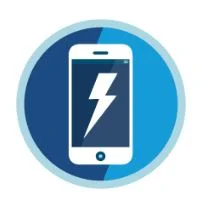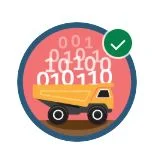Every competent sales and marketing professional out there knows the cornerstone to you and your company’s success is the relationship you build with your customer. Back in the day, we used to track this relationship via files, post-it-notes, scribbles on notepads, or complicated Excel spreadsheets that never truly made the data relatable or usable for anyone but your boss.
Luckily for us, the advent of software like Salesforce has completely transformed the way organizations manage relationships with prospects. But how do you, as a sales and marketing professional, best utilize a CRM solution to boost your sales?
It’s simply, really. You make Salesforce work for you. When deployed properly, Salesforce is a detailed touch-by-touch record of the relationships you have with your prospects.
First, if you haven’t yet, take some time to build a few customer profiles. You probably already have them in your head, but if you haven’t recorded them (or better yet built metrics in Salesforce to automatically flag which profile a prospect meets) you should do it now. The Whole Brain Blog said it best when they described what a customer profile should be:
Create profiles that describe specific segments of your current clients. Ensure that the profiles are tangible, so that you can envision this person and what would motivate them to find your business.
Describe your clients in written profiles, called personas. Create a specific persona for each identifiable client group and name them. Include images of ideal clients, either real or a hypothetical individual
It may seem like a silly exercise, but it will absolutely help you quickly categorize your prospects and determine the best strategy going forward. And because your close rate can drop dramatically the longer you take to respond to a lead, having a robust profile helps you respond quickly and with the solutions your prospect wants.
Now that you have your profiles you can really start using the power of data to boost your sales. If your CRM ties into marketing automation software like Pardot, you’ll have a detailed history of every interaction that has occurred between your company and your prospect. For instance, our sales team uses Pardot scoring to concentrate on highly-engaged prospects. They can look at the prospect’s activity and determine what pages on our website the prospect reads, what emails they open, what gets them to click through, and even what they searched to bring them to your site. That’s an immensely powerful tool to arm yourself with when you enter an opportunity, so if you don't have marketing automation, it's absolutely worth it to find one that works for you.
Lastly, don’t be afraid to build a relationship with your prospects via social networks. Now I certainly don’t suggest friend requesting them on Facebook or following them on Instagram, but as a sales professional building your network is key to building status in your industry, so don’t be afraid to reach out on LinkedIn or do a simple Google search to see how you can leverage their public persona to better your relationship.
So remember, if you want a prospect to fall in love with you, there are three things that’ll help you do it every time before you even meet face-to-face. Build comprehensive customer profiles, dive into your marketing data for valuable insights, and reach out and research in a professional, respectful manner.
For more Salesforce and CRM knowledge articles, don’t forget to come back to theforcefactory.com for the latest and greatest tips and tricks.














